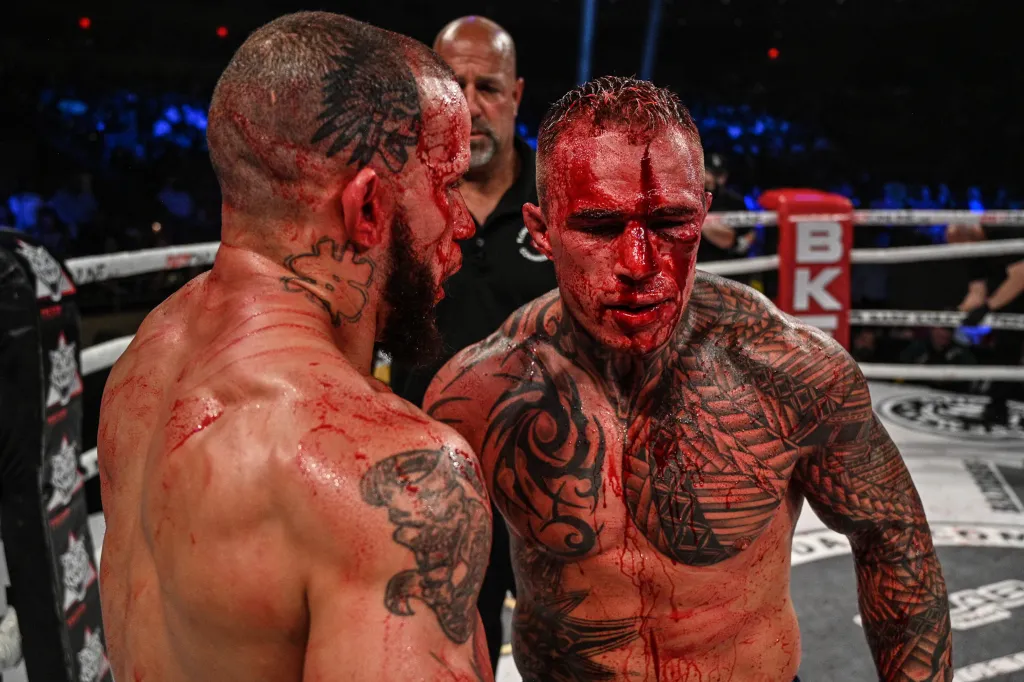👊 The Evolution of Bare Knuckle Boxing: From Early Brawls to BKFC 👊
Bare knuckle boxing, known for its raw intensity and primal appeal, boasts a history that stretches back centuries. The modern iterations of this ancient combat form, BKB (Bare Knuckle Brawl) and BKFC (Bare Knuckle Fighting Championship), represent a revival of bare knuckle fighting, blending traditional brutality with contemporary organization and rules.
Origins and Early History
Bare knuckle boxing’s origins can be traced back to ancient civilizations, where ungloved hand-to-hand combat was a common spectacle. The Greeks and Romans practiced early forms of boxing in their gladiatorial games. However, the more direct ancestors of modern bare knuckle boxing emerged in 18th-century Britain, during a time when boxing was transitioning from a mere brawl to a more organized sport.
The 18th-century version of bare knuckle boxing was brutal, with minimal rules and no protective gear. It was a sport for the masses, characterized by its violent nature and often dangerous outcomes. Fighters used a style known as the “London Prize Ring Rules,” which emphasized endurance and grit, with matches often continuing until one fighter could no longer stand.
The London Prize Ring Rules
Introduced in 1743, the London Prize Ring Rules were among the first attempts to formalize bare knuckle boxing. Created by Jack Broughton, a notable figure in boxing history, these rules aimed to bring some order to the chaotic sport. They included regulations on fighting stances, prohibited certain types of strikes, and introduced a ten-second count for knockdowns.
Despite these improvements, the sport remained brutal, with fights often lasting for long periods and resulting in severe injuries. The lack of gloves and protective gear meant that fighters frequently sustained cuts and fractures, making bare knuckle boxing a test of both physical and mental fortitude.
The Rise and Fall of Bare Knuckle Boxing
Bare knuckle boxing thrived through the 19th century, with notable fighters like James Figg and John L. Sullivan making names for themselves. However, as boxing evolved and the Marquess of Queensberry Rules were introduced in 1867, which mandated the use of gloves and round-based fights, bare knuckle boxing began to wane in popularity.
By the early 20th century, the sport had largely fallen out of favor, with gloved boxing taking center stage. Bare knuckle boxing became associated with illegal underground fights and fringe enthusiasts.
The Revival: BKB Bare Knuckle Brawl
In recent years, interest in bare knuckle boxing has surged, driven by a desire to reconnect with the sport’s raw, unfiltered nature. BKB (Bare Knuckle Brawl) represents a modern revival of this ancient combat form, aiming to capture the essence of traditional bare knuckle fighting while adapting it for contemporary audiences.
Founded in the early 2010s, BKB introduced a structured approach to the sport, combining traditional elements with modern regulations to ensure safety and fair competition. BKB events are carefully organized, with fighters undergoing medical evaluations and the use of protective equipment being mandated to reduce the risk of injury.
Key Innovations and Modern Adaptations
BKB has embraced several innovations to make the sport both exciting and safer. The introduction of padded wraps, while maintaining the bare knuckle tradition, provides some protection while preserving the sport’s raw edge. Additionally, BKB has implemented strict medical protocols and a more regulated approach to ensure that fighters are in peak physical condition and that the matches are conducted fairly.
The promotion of BKB has been accompanied by a growing fanbase, as the sport’s unique combination of historical grit and modern organization appeals to a diverse audience. Fighters in BKB are celebrated not just for their power and toughness but also for their technical skill and strategy, adding a new dimension to the sport.
The Rise of BKFC: Bare Knuckle Fighting Championship
Following the success of BKB, another major player in the revival of bare knuckle boxing is BKFC (Bare Knuckle Fighting Championship). Founded in 2018, BKFC has quickly established itself as a leading organization in the sport, providing a global platform for bare knuckle fighters.
BKFC has taken the sport to new heights with high-profile events and a growing roster of fighters. The promotion has introduced its own set of rules and regulations to enhance safety and ensure fair competition, while still retaining the sport’s raw and exhilarating nature. With its innovative approach and widespread media presence, BKFC has played a crucial role in bringing bare knuckle boxing back into the spotlight.
The Future of Bare Knuckle Boxing
The future of bare knuckle boxing, particularly through organizations like BKB and BKFC, looks promising. Both promotions are pushing the boundaries of the sport, attracting new fans, and providing fighters with opportunities to showcase their skills in a regulated environment. As the sport continues to evolve, it will likely see further advancements in safety, competition formats, and promotional strategies.
In conclusion, the journey of bare knuckle boxing from its brutal origins to the structured competitions of today, represented by BKB and BKFC, highlights the enduring appeal of this ancient combat form. By merging historical grit with modern standards, these organizations are ensuring that bare knuckle boxing remains a compelling and relevant part of the combat sports landscape.
Shooter Hoss
